Swooshing across the science center
atrium at
Albion College,
Comet! is over 100 feet long from
one end to the other.
Below are the nine individual orbs, made of powder coated aluminum,
ranging
from 42 to 48 inches in diameter.
They can be seen as 3D slices of a four-dimensional sculpture which is
highly geometric at the start and gradually
morphs into a flower-like final form. Each stage has a darker core
intertwined with a lighter tangle.
The final structure can be understood to develop in logical steps, like
a mathematical derivation.

In
Comet! orb #1, look for
the edges of a curvy dodecahedron (darker) with circles at its vertices
and its dual, a curvy icosahedron, (lighter) with stars at its
vertices. From this starting point, through a series
of evolutionary steps, the interlinked arms of the stars will open up
to embrace the entire structure.
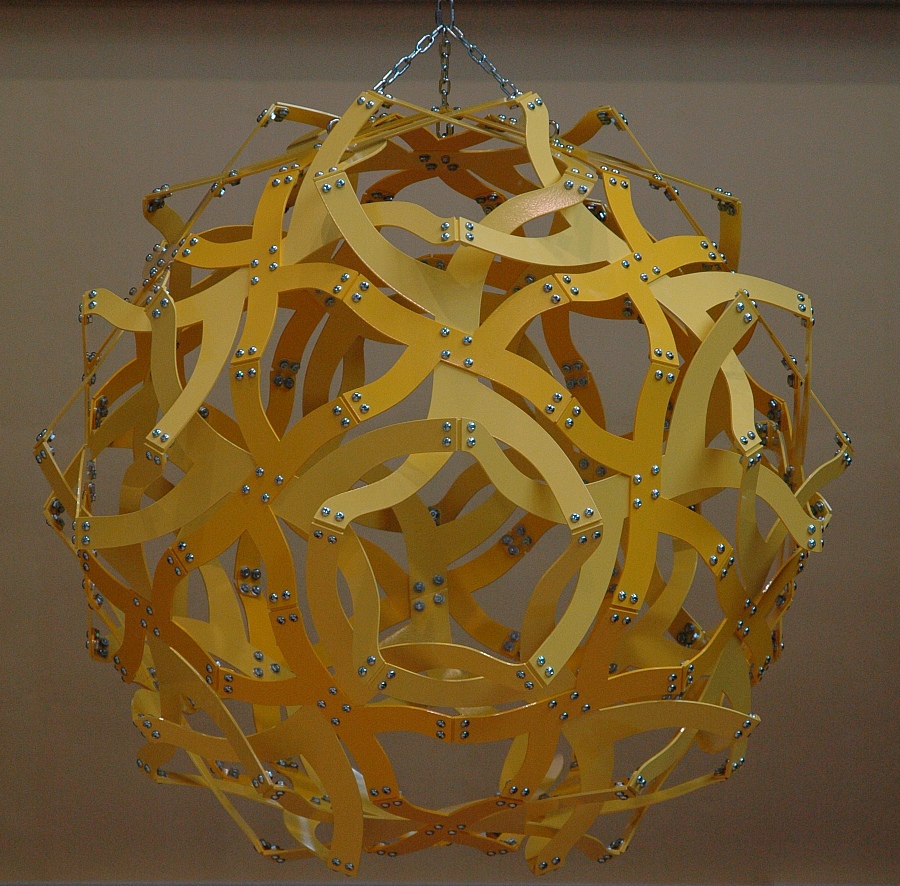
In orb #2, the circles have opened up to become triangles of an
icosidodecahedron (darker).
The stars (lighter) are much larger but remain entirely within the
darker pentagons.
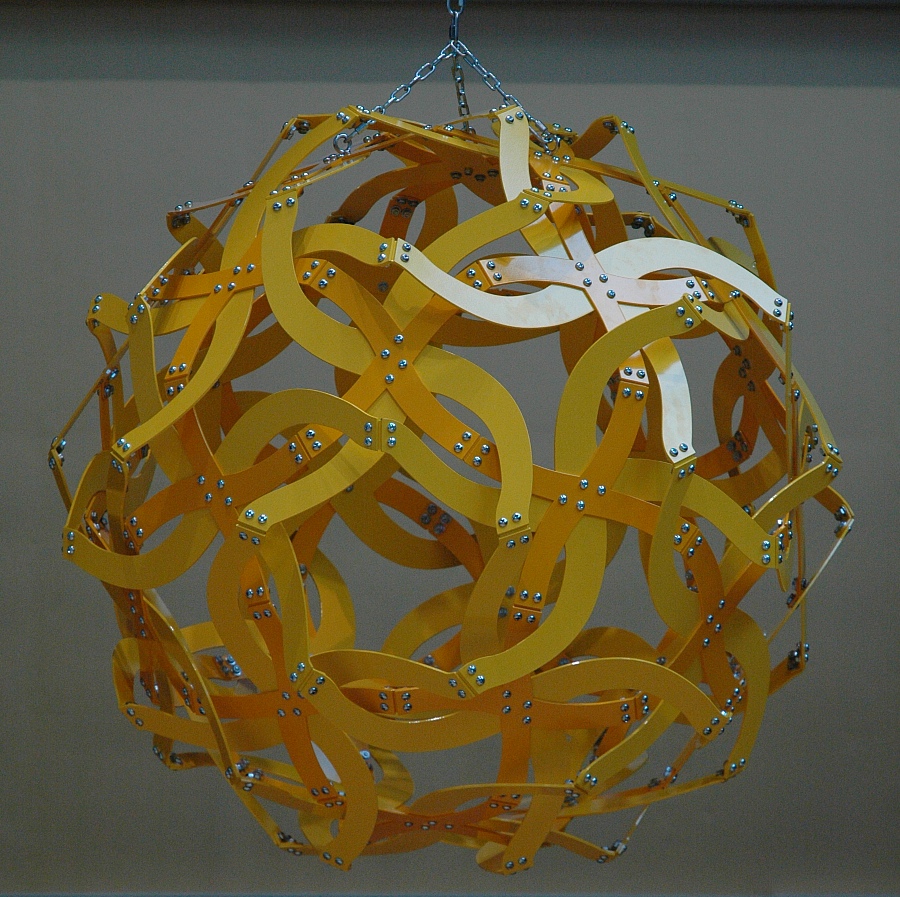
In orb #3, a star arm (lighter) has crossed to the other side of an
X-shaped triangle arm (darker),
so one light arm comes out of each triangle vertex and one comes out
from each pentagon vertex.
The curvy stars can still be seen, though they are larger and link with
five darker triangles.
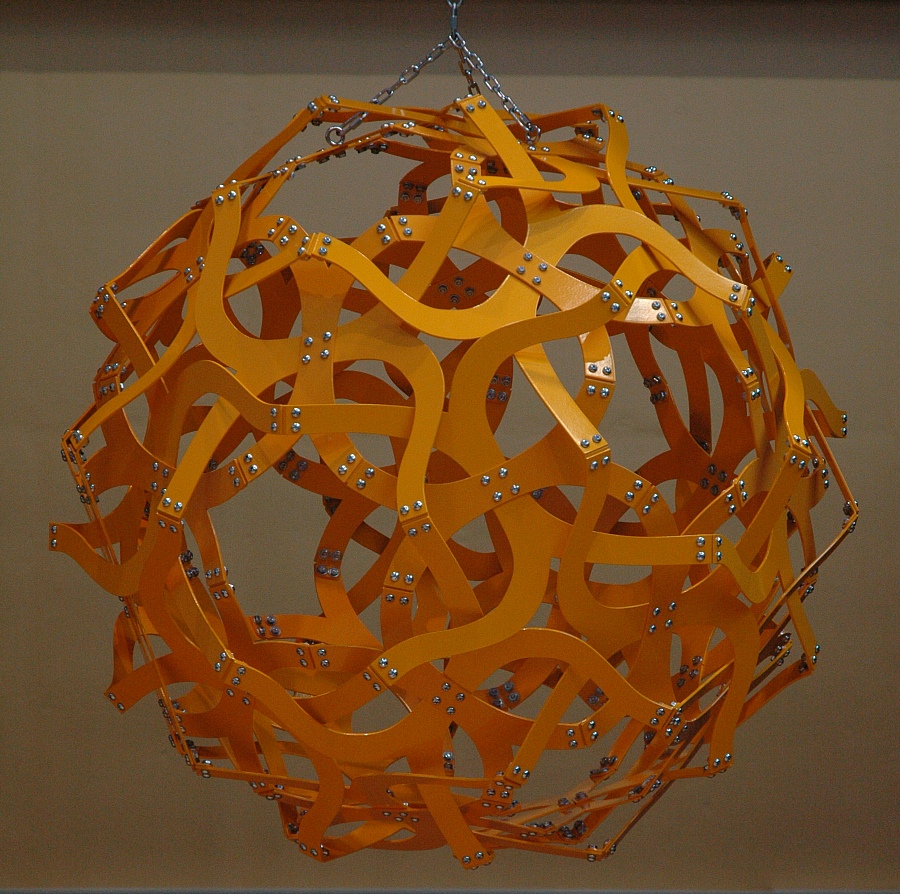
In
Comet! orb #4, the X's
(slightly darker) begin to close up to form 5-sided orifices.
The second star arm has crossed an X arm, so both lighter legs now come
out through a 3-sided opening.

In orb #5, the pentagons become circular and the genus increases as 60
small triangles open in the darker parts.
The lighter arms have swung around each other to make 3-way vortexes.
It is more difficult now to trace the 5-fold stars; they are there,
each linking with its five neighbors.

In
Comet!'s orb #6, the
5-sided openings formed by the darker parts shrink as their 3-sided
openings enlarge.
Those parts also tilt and have clearly lost any mirror reflection
symmetry.
The 3-way vortices formed by lighter parts widen so the structure
starts to feel open and relaxed.
Another 60 tiny triangular holes start to form, now in the lighter
parts, but are mostly hidden
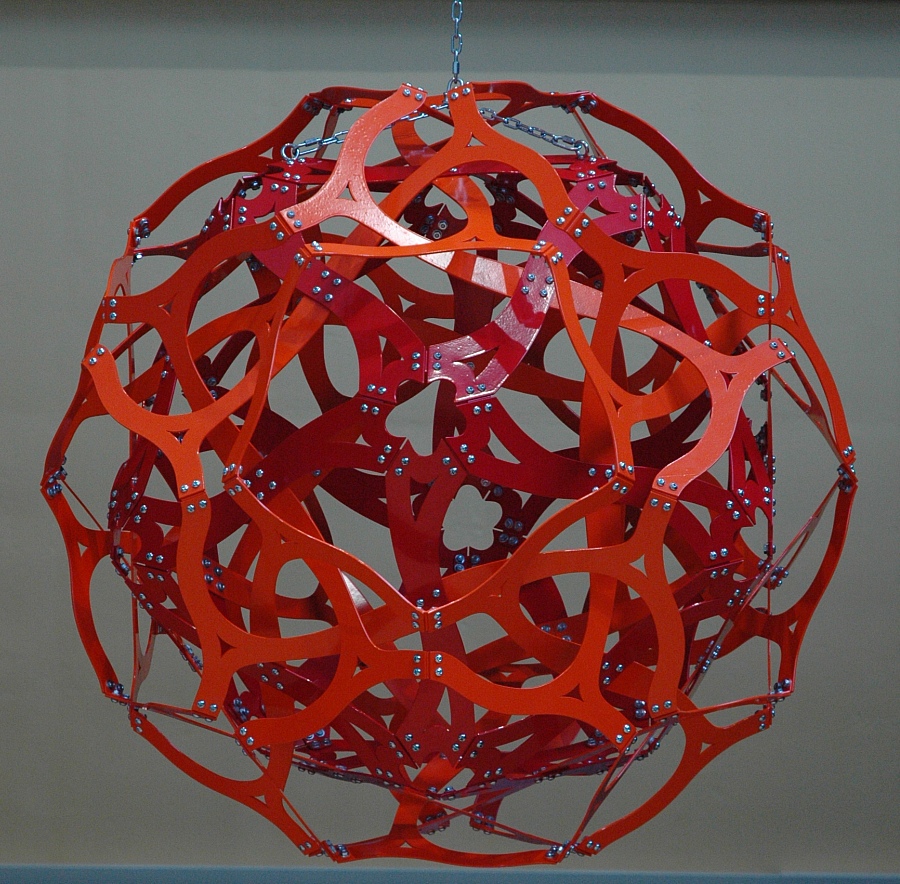
In orb #7, the 5-sided openings are tight, like flower buds about to
spring open.
The lighter arms have crossed each other so their edges forms a simple
pentagon.
Their triangular openings have stretched outwards to come out of hiding.
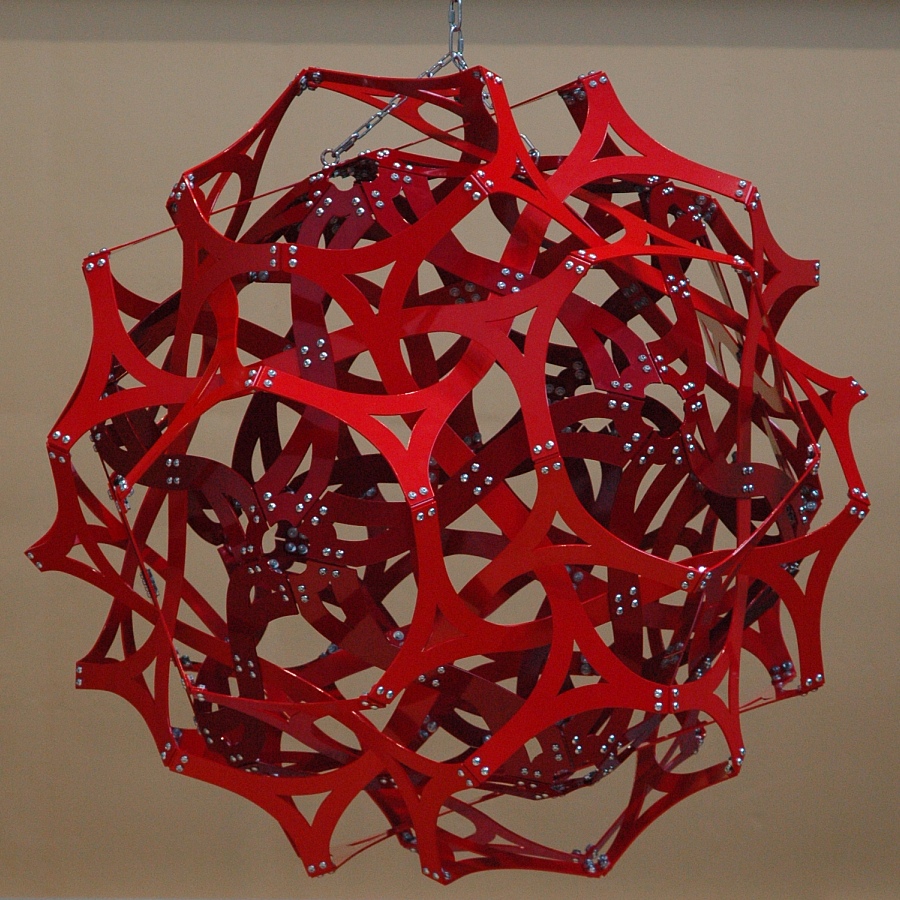
In
Comet! orb #8, the darker
inner buds still remain tightly closed as the lighter, outer arms begin
to take their final shape.
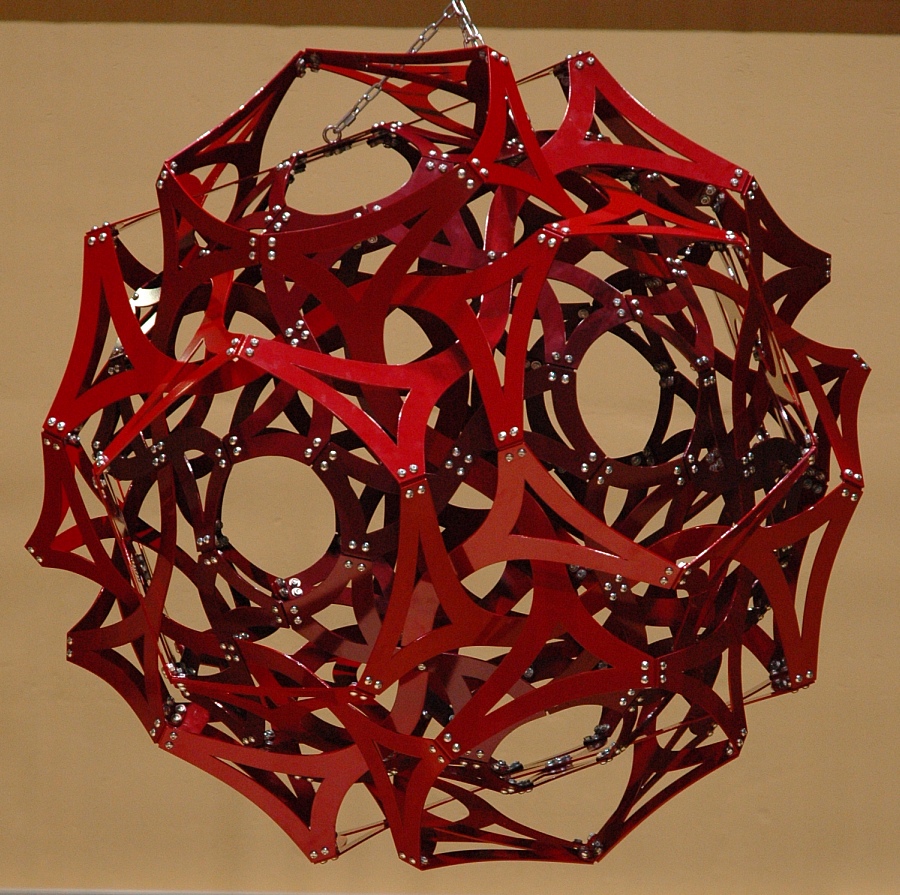
In the final orb, #9, of
Comet!, all
the components have blossomed into their final relaxed form.
The path from the underlying dodecahedron and icosahedron is only
visible to the cognoscenti.
For more information, see specific pages
for:
Photos by Gary Wahl
